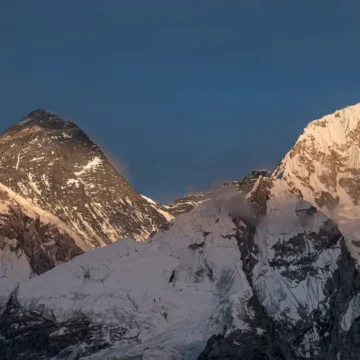
Top Toughest Descents in Nepal Trekking Routes
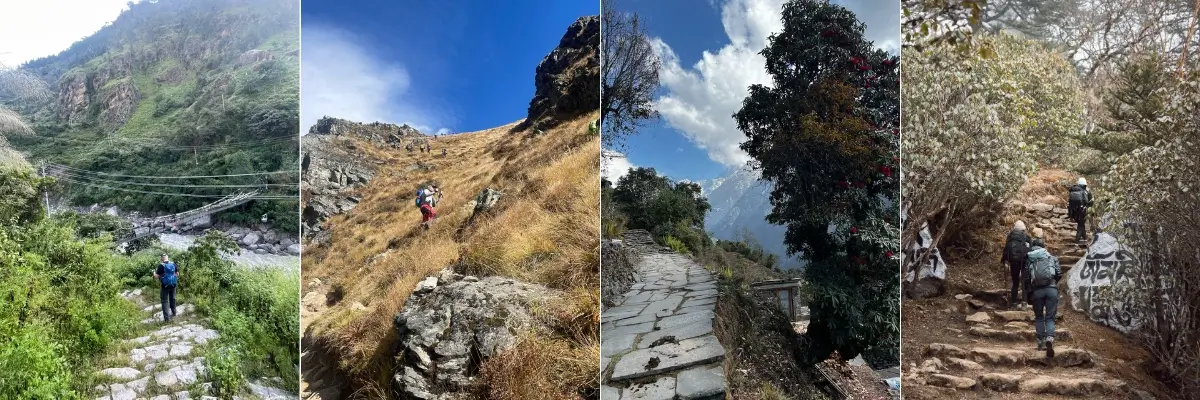
Table of Contents
Nepal is known for its stunning mountains and rich culture. But is it just the mountain? It’s obvious that these mountains test trekkers’ patience, resilience, and determination. Especially, some of the toughest descents in Nepal trek routes are what matter the most.
Whether you’re descending icy passes, steep forests, or rocky ridges, the pressure your knee exerts is intense. Most of the trekkers stress about altitude, where to stay, what to eat, and what to wear.
Often, trekkers underestimate the strain of going downhill. But, if you ask any seasoned guide or trekker what the most challenging part of the trek is, probably almost all the answers will be the same- descents.
The descents are often the most brutal part of the trek. Altitude changes, landscapes change, and destinations change, but the painful, straining descents in the Himalayas remain.
However, you don’t have to worry much. The itineraries are designed in such a way by Himalayan Masters so that your body has enough time to acclimatise and give rest to your knees and legs.
Here is a list of some of the top toughest descents in Nepal trek routes.
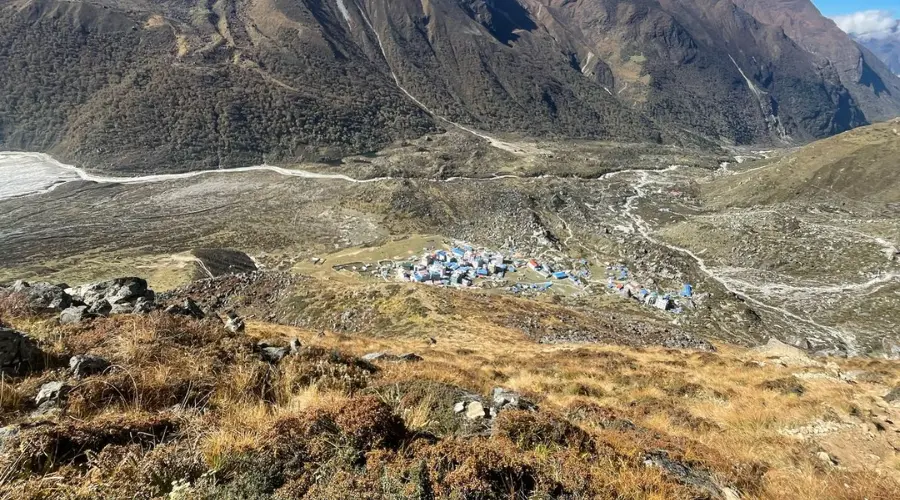
Everest Region
The high altitudes of the Everest region are known for stunning panoramic views and centuries-old Tibetan Sherpa Culture. But all these come with a price. This beautiful alpine route includes some physically demanding and mentally exhausting descents.
For trekkers on the Everest Base Camp Trek, one of the toughest descents in Nepal trek routes begins from Tengboche to Phunke Tenga. It is a steep, dusty, and knee-crunching downhill, especially dangerous when wet.
Similarly, the descent from Namche Bazaar to Lukla is also equally challenging. You may feel like it’s the end, the last day of the trek. However, be aware that the descent around the Hillary Suspension Bridge is quite steep, slippery, and crowded, requiring full focus. If not, there could be unprecedented accidents.
Descents on the Gokyo Lake Trek Route
A slightly different route from the standard Everest Base Camp (EBC) Trek route, the Gokyo Lake Trek is another great trekking option in the Everest region.
During this trek, after you have visited all 5 Gokyo Lakes, a steep drop from Machhermo to Dole and then to Phortse Thanga is quite challenging.
Likewise, the descent from Mongla Danda to Khyangjuma is not only long but tricky. One misstep on this unstable gravel can cause severe injuries. Another challenging descent from Gokyo Ri, or Cho La Pass, is equally brutal.
Annapurna Region
Another popular trekking destination is the Annapurna region.
The Annapurna Base Camp (ABC) and Poon Hill regions are known for beautiful forests and cultural Gurung villages. However, they also include some of the most exhausting downhills.
Thorong La Pass to Phedi [Annapurna Circuit Trek]
It is the most difficult descent in the Annapurna Circuit Trek route. This route from Thorong La to Phedi is completely downhill. The first part of this route traverses through a cliff route and a rocky, unstable route. Anytime the route is covered in ice, don’t walk this route without crampons. A simple mistake or loose footing will make you fall and get injured.
The route from Phedi to Muktinath is still challenging, but walkable.
Deurali to Banthanti [Ghorepani Poon Hill Trek]
The route from Deurali to Banthanti in the Ghorepani Pooh Hill Trek is somehow challenging. This narrow and staircase route tests your physical stamina and ankle strength. Especially due to snow, the route can be slippery, increasing the chances of injuries. Be careful, as the route is narrow, there are chances you might dash into another trekker passing by.
Ghorepani to Tikhedhunga [Ghorepani Poon Hill Trek]
Towards the Ghorepani region, the route from Poon Hill to Tikhedhunga is mentally straining. Especially, the last part of the trek from Ulleri to Tikhedhunga is very difficult. There are about 3200 steps, downhill. This route is physically and mentally tiring.
Tadapani to Gurjung Village – Route connecting Ghorepani and ABC
Meanwhile, the steep stone staircases from Tadapani to Gurjung really challenge your knee strength. After crossing only Gurjug Khola, you can catch your breath.
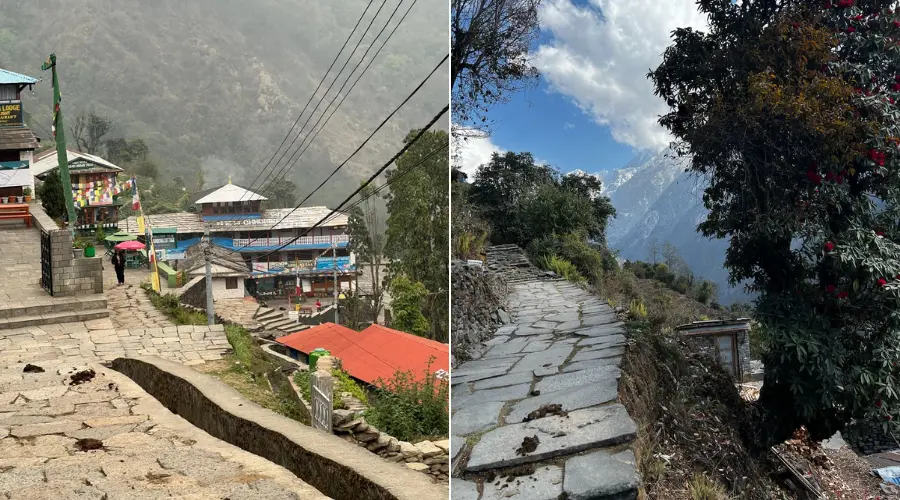
Chhomrong to Chhomrong River on the ABC Trek
One of the most prominent and challenging descents on the Annapurna Base Camp route is from Chhomrong to the Chhomrong River, and after the river, the trail takes on a completely uphill route to Upper Sinuwa. The route from Chhomrong to the Chhomrong River is daunting with staircases. Take care of your footing. If you slip off, you might get injured.
Chhomrong to Jhinu Danda [ABC Trek]
Also, the route from Chhomrong to Jhinu Danda is one of the toughest descents in Nepal trek, particularly in the Annapurna region. This stone-step route is awe-inspiring but seems never-ending. On such a route, there are chances of injuring your ankle. We suggest you use a trekking pole or a knee cap for better support.
Trekkers returning from the base camp to Bamboo experience several steep routes with little recovery space.
Manaslu Circuit and Tsum Valley
The remote location of Manaslu makes the region a heaven for seasoned trekkers. However, its descents are nothing short of punishment.
Larkya La Pass to Bhimthang
The most challenging descent on this route is from Larkya La Pass to Bhimthang. It is considered one of the toughest descents in Nepal trek routes, with the route covered in snow, ice, and slippery boulders. During the snowy season (March to May), walking without crampons is quite dangerous. One misstep can make you fall off the cliff.
Lokpa to Siyar Khola
On the other hand, the ‘Valley of Happiness’, the Tsum Valley region, is even more challenging. On the route from Lokpa to Chumling, trekkers must pass through a constant mix of ups and downs with a steep, forested route.
Particularly, the route from Lokpa to Siyar Khola is rugged and steep. At a few sections, even the knee might fickle just looking at the downhill route.
Chhekampar to Ripchet
Not to forget the descent from Chhekampar to Dumje Bridge and the risky slope from Gumba Lungdang to Ripchet or Rachen. The route passes through a cliff path and is completely downhill in some sections. These routes require both technical skills and good physical health.
Serang Gumba to Bihi Village
In Manaslu Serang Gompa Trek route, perhaps the most feared section is the trail from Serang Gumba to Bihi Village. It’s a long and unstable descent where queues of mules and loose stones make the route even more challenging. There is a high chance of an ankle twist.
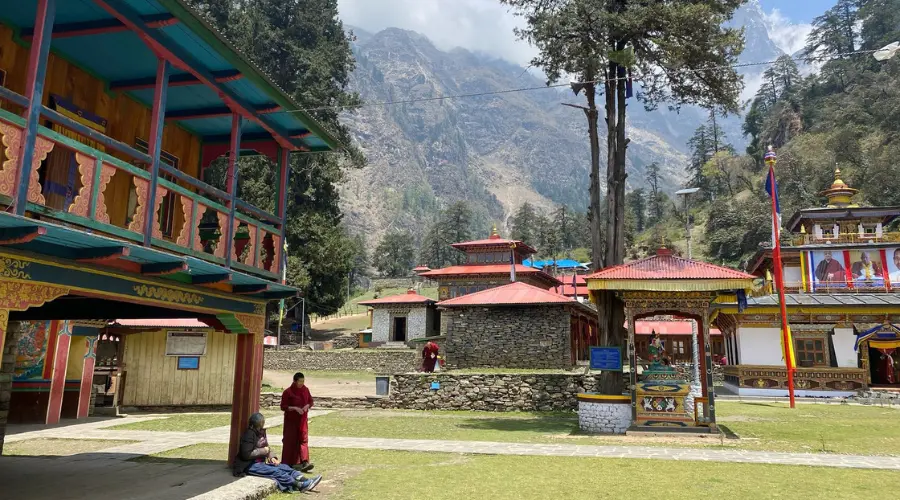
Upper Mustang
Unlike the other regions, Upper Mustang is even more popular for a dry and high-altitude trek route.
Chogo La Pas to Dhakmar
The section after crossing Chogo La Pass, heading towards Dhakmar, is the toughest. Due to the steep, dusty, and loose scree, it feels like walking on marbles. Make sure your shoe has a good grip and use trekking poles.
Lo Manthang to Dhi Village
Likewise, the trail from Lo Manthang down to Dhi Village has unstable edges. As there is nothing to take support from, it’s easy to lose footing and put more pressure on your knees. Give time for recovery and enjoy the landscape.
Tangbe Village to Chhusang
However, for many trekkers, the descent near Tangbe Village, with its sharp turns and sudden drops, is among the toughest descents in Nepal trek routes. Especially the last part of the trek, for about one and a half hours, is a completely downhill route. It’s common to get exhausted, twist an ankle, or injure a knee.
Langtang Valley
The trail on the Langtang Valley Trek is relatively easy and pleasant, passing through forests and picturesque Tamang villages.
Rimche to Langtang Khola
There are some sections that will quickly wear you down. Though the route from Lama Hotel to Bamboo is not steep, the route is rocky and wet. Therefore, you must be extra cautious with your footing.
Particularly on the route from Rimche to Langtang Khola is a steep downhill route, unstable stone route. It’s easy to slip or lose footing here. Step carefully and take precautionary measures.
Tserko Ri to Kyanjin Gompa
If you hike up to Tserko Ri, the way back is relentlessly steeper. The route gets slippery due to ice. For that reason, you might want to use a kneecap for safety or use trekking poles. If nothing, we suggest you get a sturdy branch and use it.
Langtang Gosaikunda Lake Trek
On the other hand, the Gosaikunda Lake Trek in the Langtang region includes some of the toughest descents. Particularly, the descent from Lauribina Pass to Dhunche is going to be the biggest challenge.
It includes sections prone to landslides, and the trail is also steep and slippery. Likewise, if not steep, the descent from Lauri Binayak to Cholang Pati is longer than it looks on paper.
High Mountain Passes Descents
Some of the toughest descents in Nepal trek routes are the descents from the high Himalayan passes. Descents from Kongma La to Lobuche require trekkers to navigate through technical downhill terrain of scree, ice, and rockfall zones.
Additionally, descents from Cho La Pass towards Thangnak, Renjo La to Lungden, and descents from Gokyo Ri are some notable high mountain pass descents in Nepal.
Furthermore, for many, a drop of over 1600 meters in a single day from Thorong La to Muktinath might be hellish. While the trail is well-maintained, the sheer altitude drops test your muscles and lungs.
Moreover, Larkya La Pass’s steep descent leading to Bhimthang is known to break even the strongest of trekkers.
How Local Guides Prepare for the Toughest Descents in Nepal Trek Routes?
Nepal’s local guides are mountain veterans. They have been constantly navigating through these toughest descents in Nepal trek routes. So, they are well aware of which parts of the trek are tough and which are easy. They offer their expertise and prepare you for the toughest descents that fall on the route.
The itinerary provided by Himalayan Masters is designed in such a way that your body has enough time to rest and acclimatise.
Moreover, before crossing steep sections, these local guides assess the accessibility and your physical condition. Based on all factors, these expert guides can customise the itinerary.
Nevertheless, regardless of how easy or tough the route is, having a pair of trekking poles or crampons (especially for slipper routes) is wise. A slow and steady ascent, as well as descent, is advised. Even if you don’t have any pain in your knees, don’t rush.
More importantly, they prepare trekkers mentally. They remind you to take breaks and loosen your knees while walking. Their ability to read terrain and body language is vital for a safe passage through the worst descents.
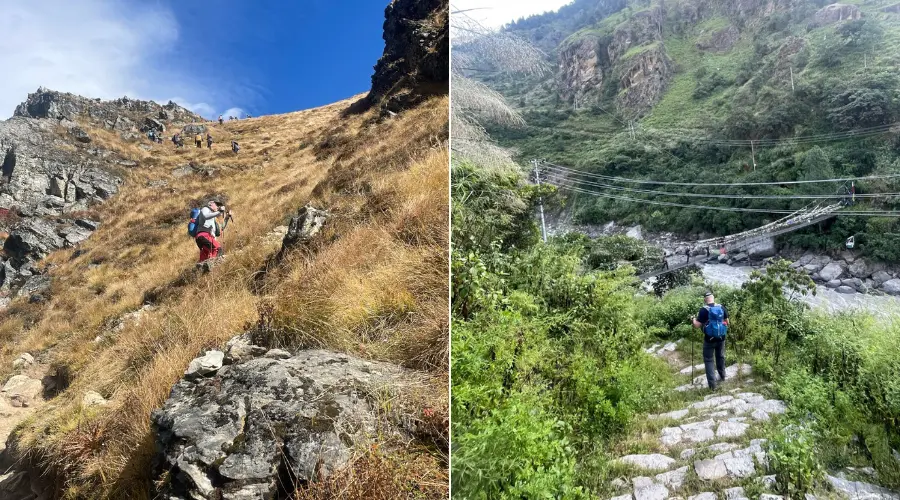
Common Injuries and Risks on Nepal Descents
Many may think descending is easier than climbing, but it is not. Descending is when trekkers face most injuries. The most common problems include:
- Knee strain and IT band pain from steep, continuous downward motion.
- Slips and falls, especially on wet rocks, mossy trails, or scree.
- Twisted ankles due to uneven terrain and hidden roots or rocks.
- Exhaustion reduces coordination and increases the risk of tripping.
- Sudden elevation change can cause dehydration or dizziness. You might face lapses, so try to stay alert.
Why Descents on The Trek Matter?
The uphill ascents are always interesting. With each day passing, you reach nearer to your trek’s final destination. However, when returning, you feel nostalgic and, more importantly, cover longer distances.
Trekkers descend for hours or even days on gentle and steep downhill paths, icy, loose stone paths and sometimes endless staircases. These endless staircases are the toughest descents in Nepal trek routes.
If you are not careful, there is a chance of slipping and getting injured. Moreover, they are more challenging physically as well as mentally, requiring your full focus.
Therefore, if you’re planning a Himalayan adventure, don’t just prepare for jaw-dropping views, but also be prepared for knee pain, learn proper descending techniques, and respect the path.
Want to know more?
Speak to an Expert





Sandip Dhungana
Nepal 🇳🇵
Whatsapp: +977-9823636377

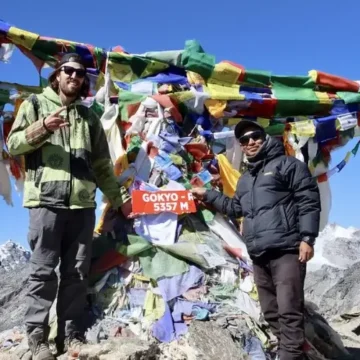
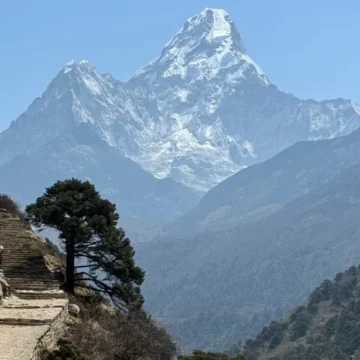
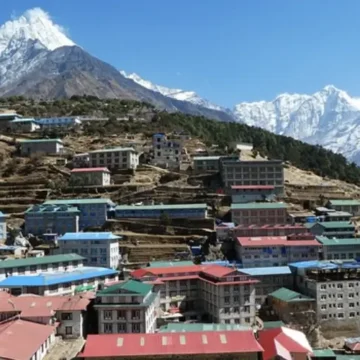
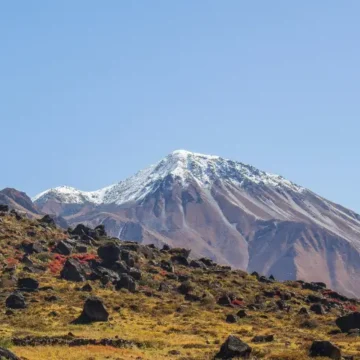

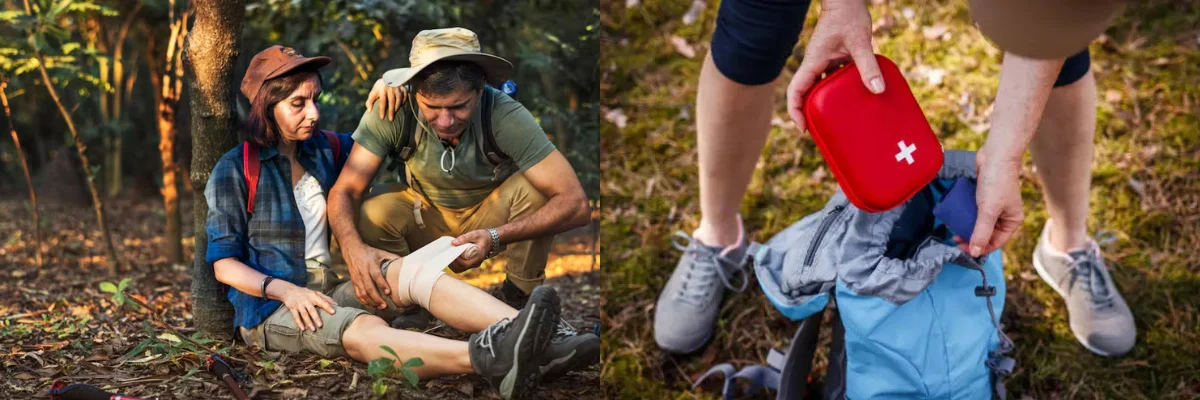

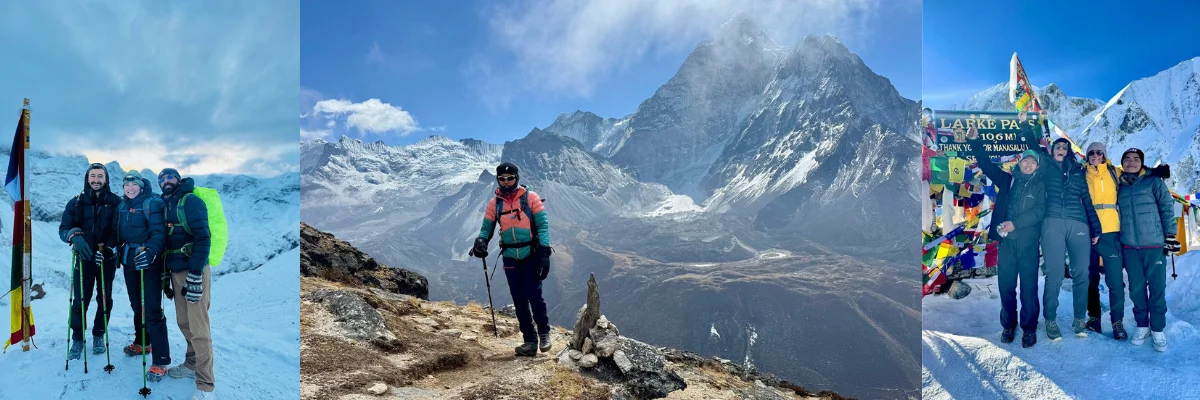
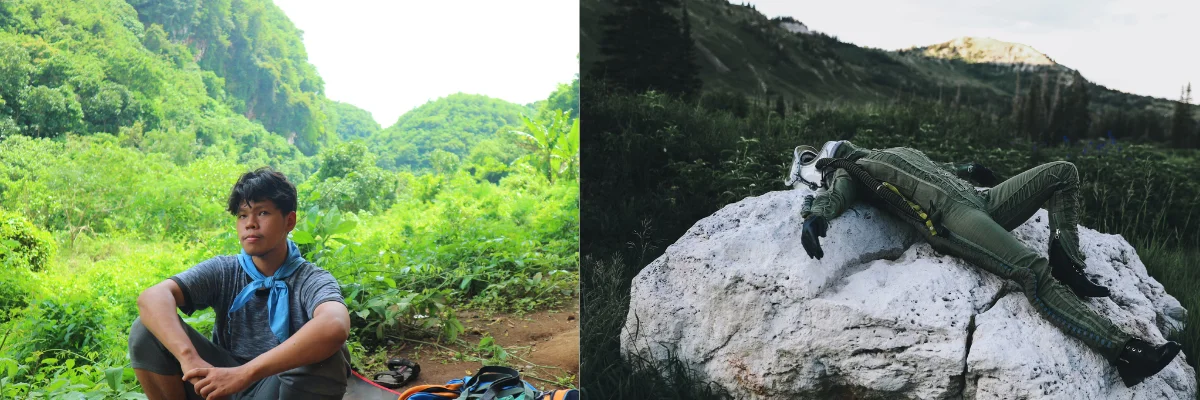
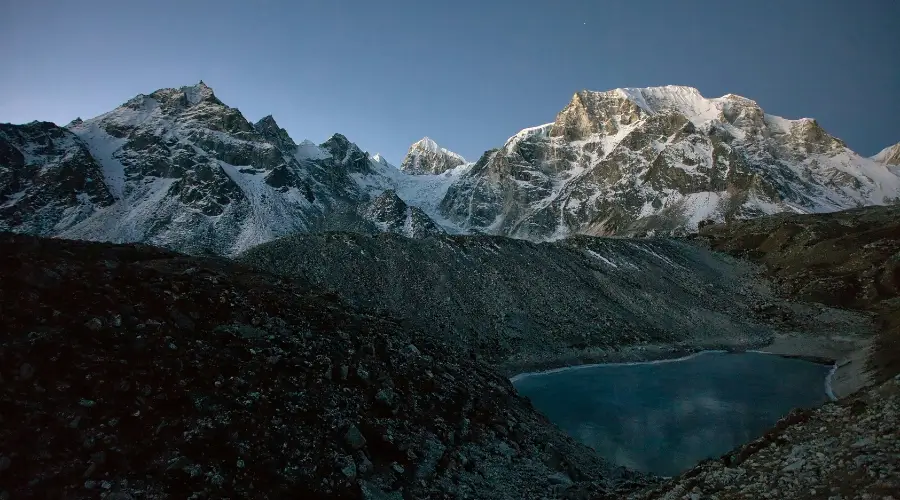
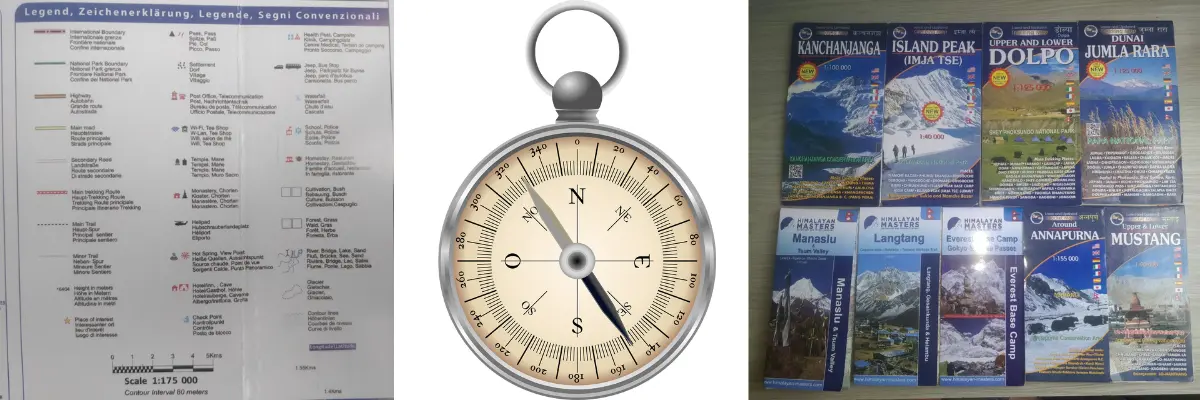
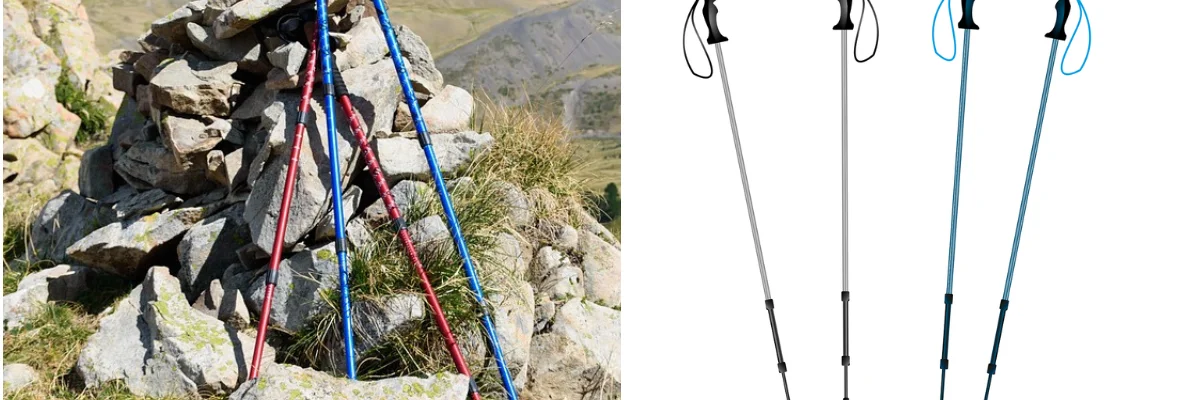









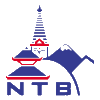
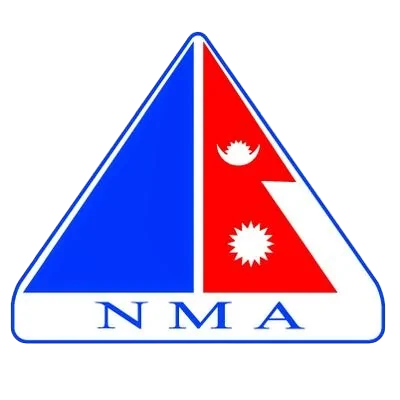


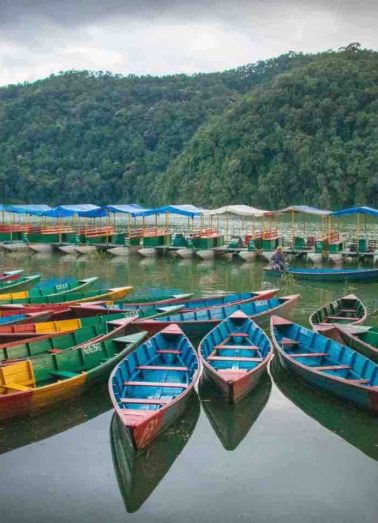

Leave Your Comment